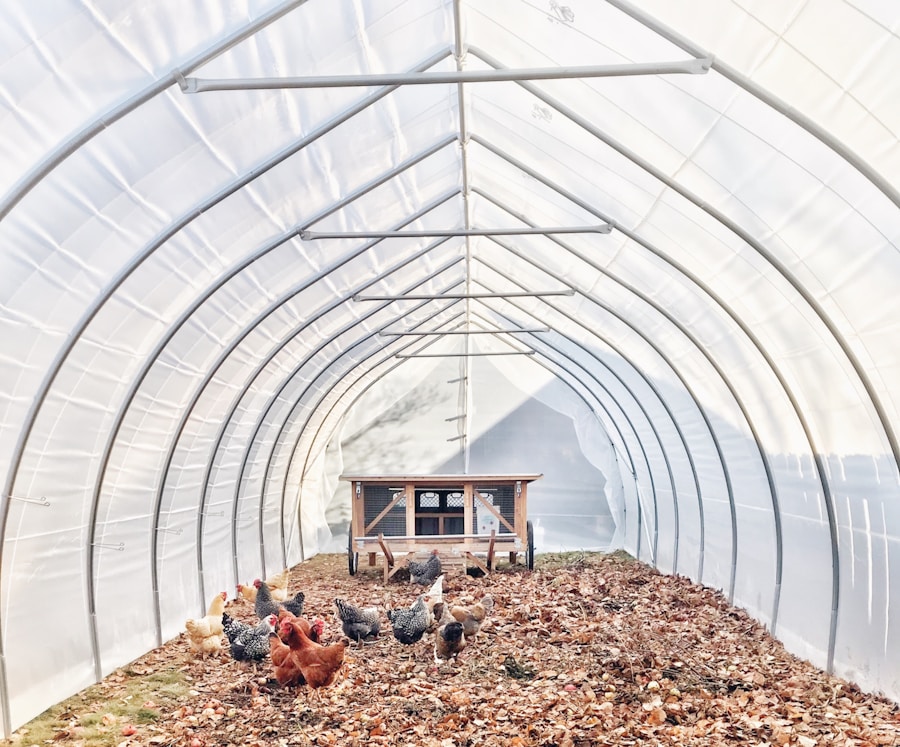When considering raising backyard chickens, it’s important to understand the initial costs involved in getting started. The first investment will be in the chickens themselves. Depending on the breed and age of the chickens, you can expect to pay anywhere from $3 to $30 per bird. Additionally, you’ll need to factor in the cost of a coop and run. A basic coop can cost anywhere from $200 to $500, while a larger, more elaborate coop can run upwards of $1000. You’ll also need to consider the cost of feeders, waterers, and other essential equipment for housing and caring for your chickens. Finally, there may be additional costs for permits or licenses, depending on your local regulations.
In addition to the initial investment in chickens and housing, you’ll also need to budget for ongoing expenses. This includes the cost of feed, bedding, and healthcare for your chickens. The cost of feed can vary depending on the type and quality of feed you choose, but you can expect to spend around $15 to $30 per month per chicken. Bedding, such as straw or wood shavings, will also need to be replaced regularly, adding to your monthly expenses. Finally, you’ll need to budget for healthcare costs, including vaccinations and potential veterinary care. It’s important to factor in these ongoing expenses when considering the financial commitment of raising backyard chickens.
Table of Contents
- 1 Ongoing Expenses: Budgeting for Feed, Bedding, and Healthcare
- 2 Coop and Run: Determining the Cost of Housing for Chickens
- 3 Equipment and Supplies: Calculating the Price of Essential Items
- 4 Unexpected Costs: Planning for Emergencies and Unforeseen Expenses
- 5 Saving Strategies: Tips for Cutting Costs and Maximizing Resources
- 6 Long-Term Financial Considerations: Factoring in the Lifetime Expenses of Backyard Chickens
Ongoing Expenses: Budgeting for Feed, Bedding, and Healthcare
When it comes to ongoing expenses for raising backyard chickens, one of the most significant costs is feed. Chickens require a balanced diet to stay healthy and produce eggs, so it’s important to budget for high-quality feed. Depending on the size and breed of your flock, you can expect to spend anywhere from $15 to $30 per month per chicken on feed. Additionally, you’ll need to budget for bedding, which will need to be replaced regularly to keep your coop clean and comfortable for your chickens. Bedding costs can vary depending on the type of material you choose, but you can expect to spend around $5 to $10 per month per chicken.
Another ongoing expense to consider is healthcare for your chickens. While chickens are generally hardy animals, they can still require veterinary care from time to time. Additionally, you’ll need to budget for vaccinations and other preventative measures to keep your flock healthy. It’s important to factor in these ongoing expenses when considering the financial commitment of raising backyard chickens. By budgeting for feed, bedding, and healthcare costs, you can ensure that you’re prepared for the ongoing expenses of keeping chickens.
Coop and Run: Determining the Cost of Housing for Chickens
One of the most significant initial costs of raising backyard chickens is the coop and run. The coop is where your chickens will roost at night and lay their eggs, while the run is an outdoor area where they can roam and scratch for food. The cost of a coop can vary widely depending on its size and features. A basic coop suitable for a small flock can cost anywhere from $200 to $500, while a larger, more elaborate coop with additional features such as nesting boxes and ventilation can run upwards of $1000. Additionally, you’ll need to budget for a run or outdoor enclosure for your chickens, which can add several hundred dollars to the overall cost.
When determining the cost of housing for chickens, it’s important to consider not only the initial investment in the coop and run but also any ongoing maintenance or repair costs. Coops and runs will need regular cleaning and maintenance to keep them in good condition, so it’s important to factor in these ongoing expenses when budgeting for housing costs. By carefully considering the cost of housing for chickens, you can ensure that you’re prepared for this significant initial investment.
Equipment and Supplies: Calculating the Price of Essential Items
In addition to the cost of housing, there are several essential items that you’ll need to budget for when raising backyard chickens. This includes feeders and waterers, which are essential for providing food and water to your flock. The cost of feeders and waterers can vary depending on their size and quality, but you can expect to spend around $20 to $50 per item. Additionally, you’ll need to budget for other essential equipment such as nesting boxes, which provide a safe and comfortable place for your hens to lay their eggs. Nesting boxes can cost anywhere from $20 to $50 each, depending on their size and features.
Other essential supplies to consider include heat lamps or heaters for keeping your chickens warm in colder months, as well as fencing or netting to protect your flock from predators. These items can add several hundred dollars to the overall cost of raising backyard chickens. By carefully calculating the price of essential items such as feeders, waterers, nesting boxes, and other supplies, you can ensure that you’re prepared for the financial commitment of keeping chickens.
Unexpected Costs: Planning for Emergencies and Unforeseen Expenses
While it’s important to budget for the known expenses of raising backyard chickens, it’s also crucial to plan for unexpected costs. Chickens, like any animals, can experience health issues or other emergencies that require veterinary care or other unexpected expenses. It’s important to have a financial cushion in place to cover these unforeseen costs. Additionally, you’ll need to consider the potential cost of replacing equipment or making repairs to your coop or run if they become damaged or worn over time.
Another potential unexpected cost to consider is the loss of chickens due to illness or predation. While it’s impossible to predict these events with certainty, it’s important to have a plan in place for replacing lost birds if necessary. By planning for emergencies and unforeseen expenses, you can ensure that you’re prepared for the unexpected costs of raising backyard chickens.
Saving Strategies: Tips for Cutting Costs and Maximizing Resources
While there are significant costs involved in raising backyard chickens, there are also several strategies you can use to cut costs and maximize your resources. One way to save money is by purchasing used equipment or supplies whenever possible. Many farmers or homesteaders sell used coops, feeders, waterers, and other essential items at a fraction of the cost of new ones. Additionally, you can save money on feed by purchasing in bulk or growing your own feed if you have the space and resources.
Another way to cut costs is by making your own bedding or using natural materials such as straw or wood shavings instead of purchasing commercial bedding products. Additionally, you can save money on healthcare costs by learning basic first aid and preventative care techniques for your chickens. By implementing these saving strategies and being resourceful with your resources, you can reduce the overall cost of raising backyard chickens.
Long-Term Financial Considerations: Factoring in the Lifetime Expenses of Backyard Chickens
When considering the financial commitment of raising backyard chickens, it’s important to factor in the long-term expenses over the lifetime of your flock. Chickens can live for several years, so it’s crucial to consider not only the initial investment but also the ongoing costs over time. This includes budgeting for feed, bedding, healthcare, and other essential expenses over the lifetime of your flock.
Additionally, it’s important to consider the potential return on investment from raising backyard chickens. While there are significant costs involved in keeping chickens, there are also potential benefits such as fresh eggs and natural pest control that can help offset these expenses. By carefully factoring in the lifetime expenses and potential benefits of raising backyard chickens, you can make an informed decision about whether it’s a financially viable option for you.
In conclusion, raising backyard chickens involves several significant financial considerations. From understanding the initial investments in chickens and housing to budgeting for ongoing expenses such as feed, bedding, and healthcare, there are several costs to consider. Additionally, it’s important to plan for unexpected expenses and have strategies in place for cutting costs and maximizing resources. By carefully considering these financial factors and factoring in the long-term expenses over the lifetime of your flock, you can make an informed decision about whether raising backyard chickens is a financially viable option for you.
Meet Walter, the feathered-friend fanatic of Florida! Nestled in the sunshine state, Walter struts through life with his feathered companions, clucking his way to happiness. With a coop that’s fancier than a five-star hotel, he’s the Don Juan of the chicken world. When he’s not teaching his hens to do the cha-cha, you’ll find him in a heated debate with his prized rooster, Sir Clucks-a-Lot. Walter’s poultry passion is no yolk; he’s the sunny-side-up guy you never knew you needed in your flock of friends!







